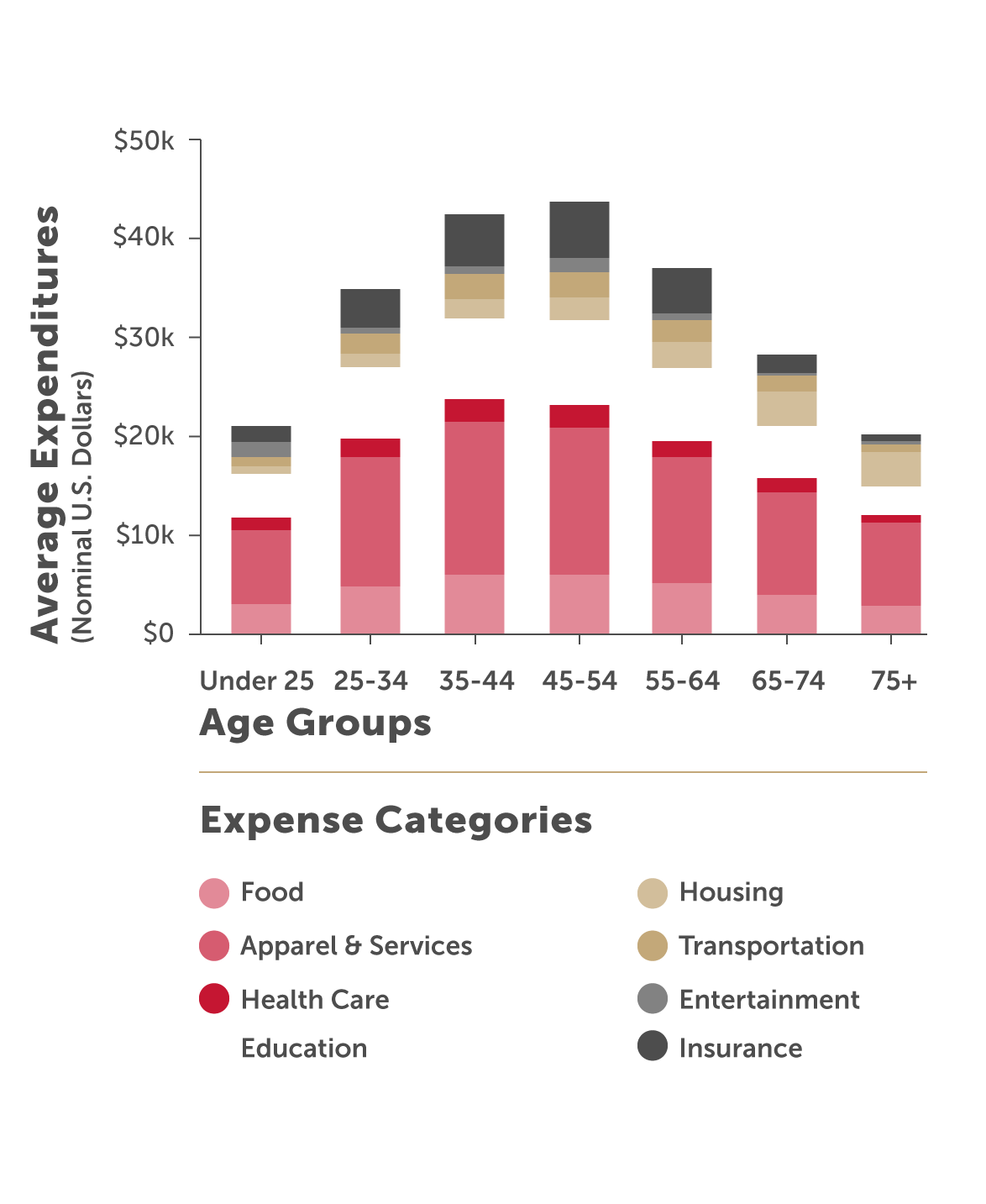Millennials recently overtook boomers as the largest generation. Do marketers have to choose between the two?
With millennials now outnumbering boomers1 and entering their peak consumption years2, a huge amount of marketing energy is rightly being directed towards them. These messages are often crafted to the explicit exclusion of boomers in order to avoid aging the brand or alienating younger consumers. Is this a missed opportunity? While there are important differences between generations based on the context in which they came of age, and segmenting based on generation can appropriately focus many brands, millennials and boomers are already communicating around shared values and attitudes that carry a great deal of marketing potential. As millennials join boomers in their peak consumption years, in some cases they may be ready for the same message.
Millennials are entering peak spending years

While millennials may frame their identity in terms of brands more than boomers, both groups understand that brands can help create connections, engage others and contribute to fulfilling experiences. They share a desire for exuberance and youthfulness, so that a focus on a meaningful and enriched life speaks across generations without excluding one or the other.
These underlying shared values mean there are opportunities to appeal to both generations while respecting different tendencies. For example, boomers tend to appreciate high levels of customer service while millennials often look to technology to make the purchase experience seamless. These goals can both be met through a frictionless digital interaction that emphasizes the customers’ needs. Even as you may turn to different pathways to appeal to each group, you must ensure that your brand experience is consistent across channels, which will always result in a stronger and clearer message.
As you consider your brand message going forward, how will you capture the potential of both boomers and millennials?
Selected sources:
- U.S. Census Bureau, http://www.census.gov/newsroom/press-releases/2015/cb15-113.html
- Morgan Stanley, 2016 “Generations Change How Spending Is Trending,” Goldman Sachs, U.S. Census Bureau
